Tell someone you hunt mushrooms in the fall, and they’ll utter phrases like: “Are you crazy, do you really know what you’re picking?”
“Why do you want to do that, aren’t you scared that you might pick and eat a poisonous one?” “You don’t eat those (fall mushrooms) surely, do you?”
Statistics related to the frequency of mushroom poisonings are hard to come by, according to the Centers for Disease Control (CDC) in Atlanta, Georgia. While the federal agency says the poisoning rate seems to be very low, the potential exists for grave problems.
When it comes right down to it, proper fall mushroom hunting is a combination of education and caution. Furthermore, it is a process of elimination, search for common features, cross reference with official ID guides and second opinion from an expert. These steps all need to be done to completely verify what you have is an edible fungi specie, not a toxic lookalike!
The number one rule when fall mushroom hunting is to thoroughly get to know just several species that are distinctive and abundant. The majority of the edible varieties have nicknames that mimic their characteristics, much like the spring morel, which is dubbed the “sponge” mushroom. The colors of edible fall mushrooms can blend with the drab shades of dead bark or stand out like the colors of a winter holiday pageant.
From my perspective as a longtime woodsman in Nebraska, there are four easily identified autumn mushrooms to find, gather and eat. They are the giant puffball, oyster mushroom, chicken of the woods and shaggy mane. These are typically found in the same habitat where white-tailed deer, wild turkeys and fox squirrels roam. Some have emerged already while others will appear soon. Look for them in or near moist mature river and creek bottom woodlands, particularly in the eastern part of the state.

Here are those four mushrooms to seek in fall:
The giant puffball mushroom Calvatia gigantea (Langermannia gigantea) is by far among the most recognizable of all fall fungi. It is white, large, round and smooth, in appearance and can reach diameters larger than a basketball!

The giant puffball is rated “choice” for eating. The fruiting body of a puffball grows directly from its root system in the ground. It feeds off of decaying organic matter within the soil.
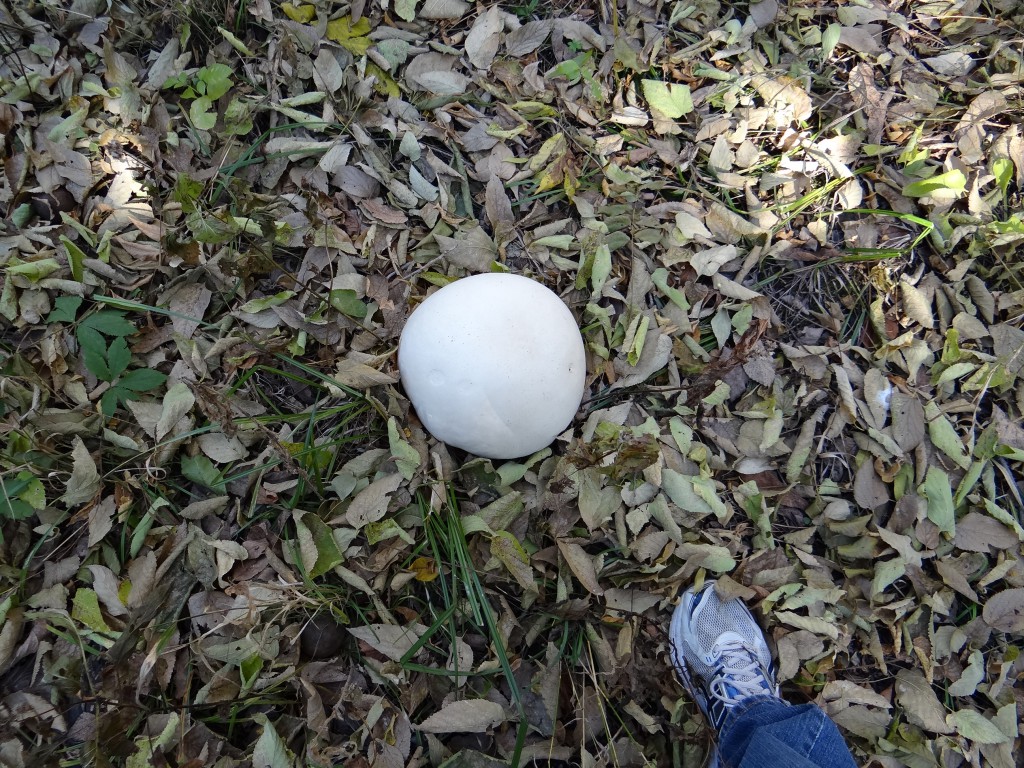
If you find one with a stalk or stem, discard it; it’s not a puffball and may very well be an unsuitable look-alike, characterized by a rancid odor.
Members of the puffball family grow from July through November in most North American softwood and hardwood forests. Their outer coloration is typically white to olive brown, and should always be white inside for use at the dinner table. As puffballs age, their centers turn yellowish-brown and eventually dry, producing spores. It is said that a single giant puffball produces up to 7 trillion spores. To understand how the puffball got its name, step on the dried shell after a puffball is spent, and watch it “puff” smoke — in the form of millions of dried spores.
The giant (puffball) grows primarily in open-timber, but can appear in pastured ground and even in some urban areas. During prime conditions, it can look like a lost volleyball out-of-place on woodland court.
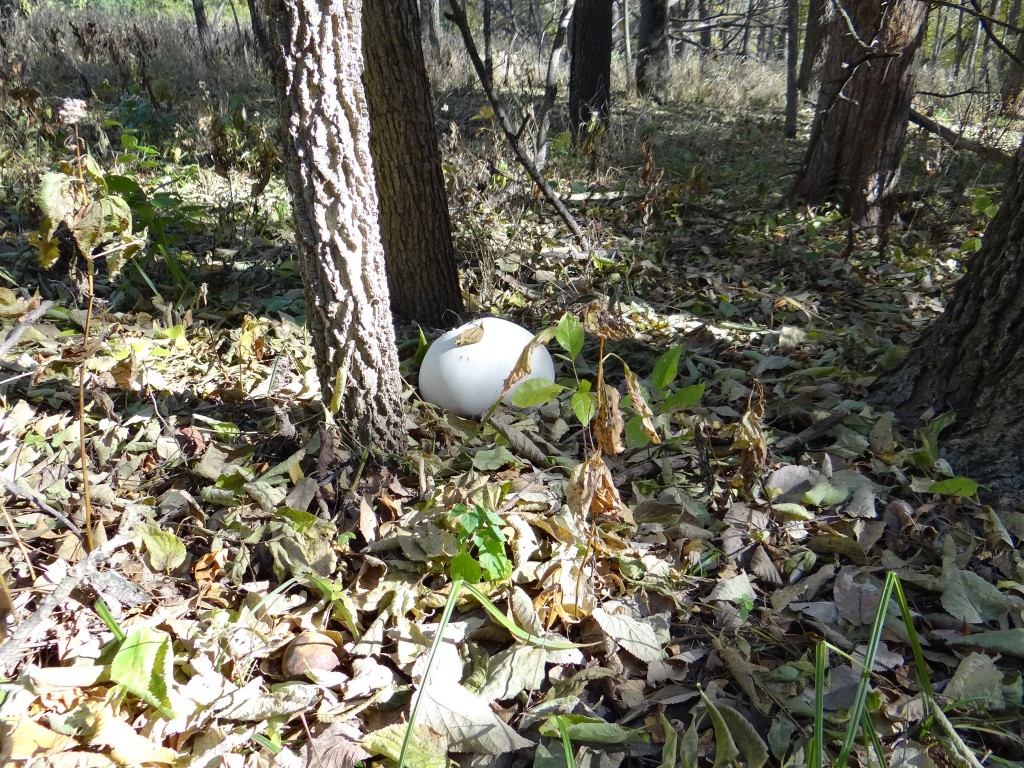
Now, to prepare a giant puffball for consumption, cut or peel the outer shell. Do not wash or soak the meat unless insects have laid first claim. The sweet smell and savory flavor of the puffball makes an excellent addition to a saute of onions, bell peppers and other favorite garden vegetables. The most popular method of preparation, however, is frying. Slice it thin like a fish fillet. Coat with a fish or chicken batter before frying. Enjoy!
The oyster mushroom Pleurotus ostreatus and P. pulmonarius refers to the mushroom’s shape, not taste (sorry, seafood lovers). However, it is a very tasty mushroom! It is prolific in the fall. The broad cap of the oyster can be white, gray or brown and it can be found on the decaying wood of cottonwood, ash, poplar and aspen trees. This fungi species pushes through the tree bark after a decent rain. The oyster mushroom is whitish or yellow-tinged in color and is usually attached to deciduous trees in shelf-like clusters.
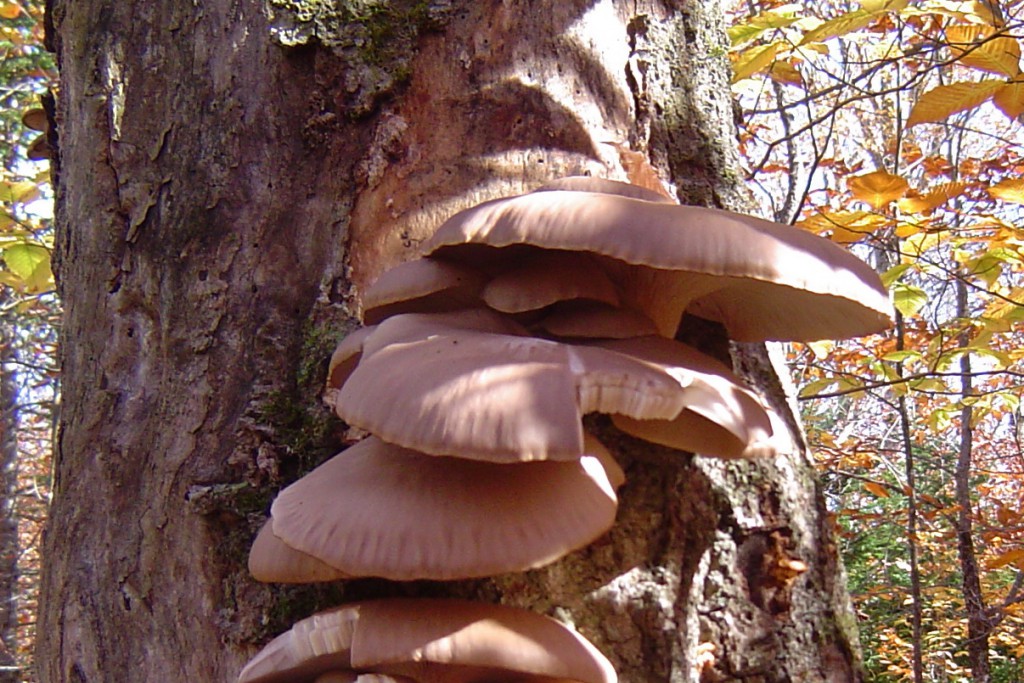
Sometimes called the tree oyster mushroom, box elder mushroom or elephant ear, it can also grow from a stubby, thick, off-center, white stalk. The prized oyster mushroom is widely dispersed throughout North America. Moist river and creek bottoms with an array of hardwood and softwood trees are prime places to search for the oyster fungi.
The oyster’s pleasantly mild smell distinguishes it from inedible look-a-likes that either lack odor or smell like tree bark. It actually smells a bit like licorice. Oysters are attached to wood, have gills that are free and go all the way to its base. As with any mushroom, it is important to carefully cut it at its lowest part with a sharp, larger pocketknife or pair of scissors. Always check aging oysters for white grubs; then wash, slice or tear into smaller strips. Roll the damp pieces in a dry mixture of batter and fry. ”M’m! M’m! Good!”
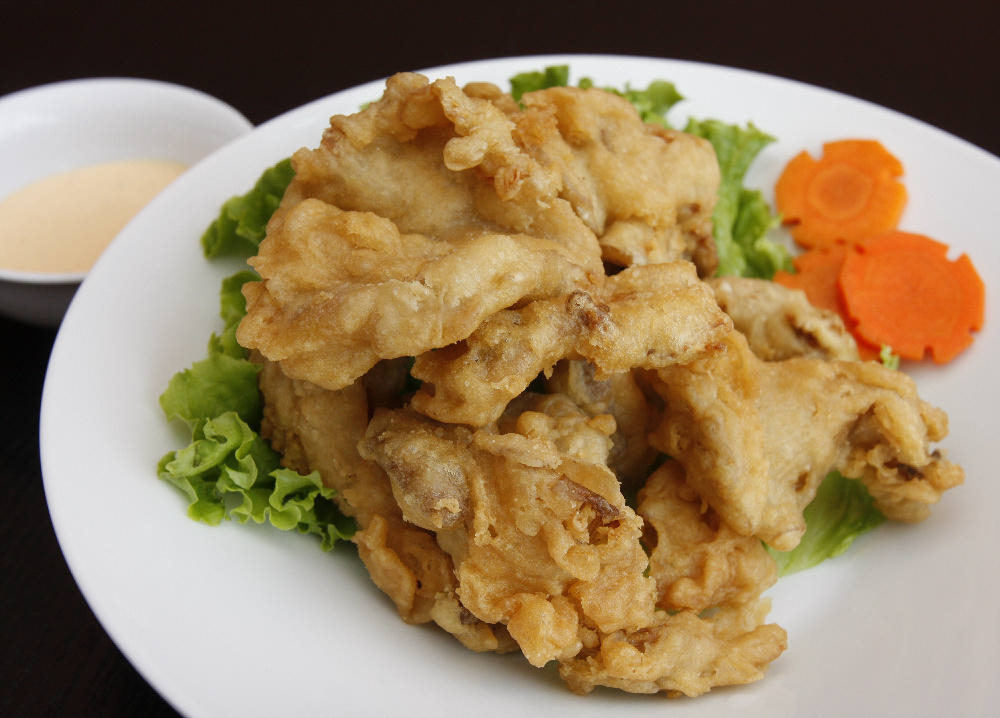
Chicken of the woods (sulfur-colored) Laetiporus sulphureus is easy to identify thus they’re considered one of the best fall mushrooms for beginners to gather. Other names for it are chicken fungus, chicken mushroom, and sulfur shelf. The genus is Laetiporus.
The “chickens” are easily recognized by their impressive size and large clusters of overlapping brackets, vibrant yellow-orange to orange cap colors and bright yellow tips. This mushroom is a polypore, meaning the fungi disperses spores through small pores (holes) on the underside of its caps. The colors of chicken of the woods will fade and the fungi becomes tougher as it grows older.
The chicken fungus grows generally in clusters on living and dead trees, stumps, logs and buried roots overlapped in a shelf-like way, and often in great quantity. Try to harvest chicken of the woods when it is smaller, vividly colored, and tender. Clean these mushrooms by wiping them down with a damp cloth.
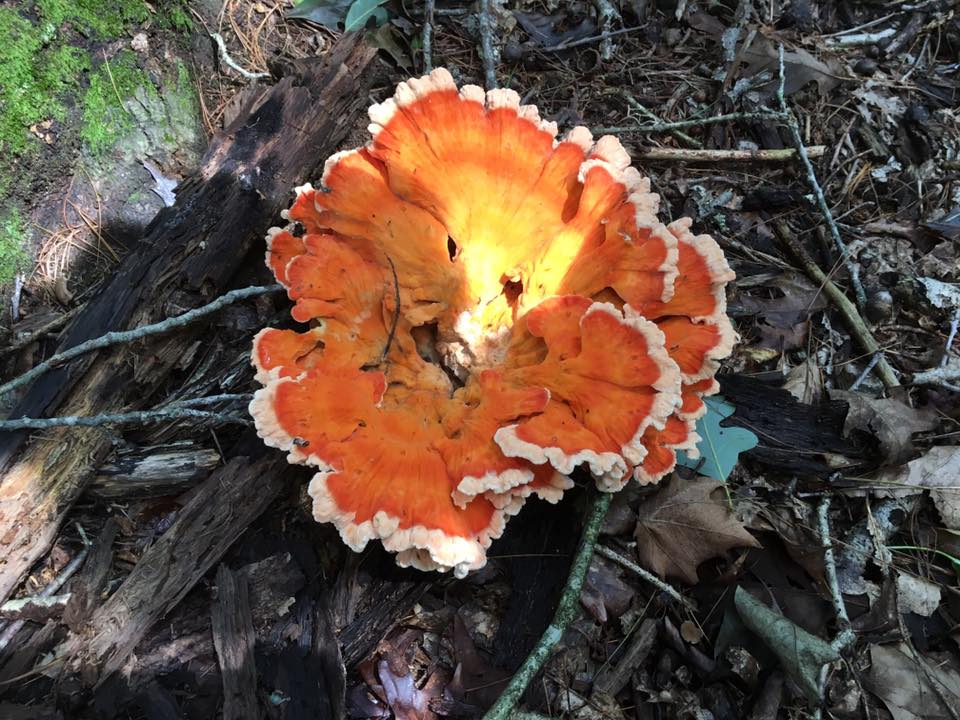
The chicken of the woods is a culinary treat with sort of a lemony, meaty taste. Some folks think it hits the palate similar to its chicken namesake. You can use chicken of the woods in place of chicken or tofu in virtually any recipe. This mushroom also works well in curries, rice recipes, risottos, casseroles, or any egg dish. It’s important to note that this is one of those mushrooms that sometimes causes gastric distress in certain people so cook it thoroughly. Avoid a possible stomach issue by only sampling a little bit.
The shaggy mane Coprinus comatus is a common and simple fall mushroom to recognize. It grows solitary, in tight groups or loose clusters, preferring hard ground and grassy areas with rich or disturbed soil. The shaggy mane is among several members of the family called “Inky Caps” and share a family resemblance.
The mushroom has an elongated shaped, shaggy cap with brownish upturned scales and a straight, semismooth stem. The shaggy mane is also widely known as “inky cap,” as the gills and often the caps digest themselves at maturity, turning into an inky black fluid that will drip to the ground. This autodigestion helps disperse spores into the air to produce a future crop.
Growing to 6” in height and up to 2” in diameter, this mushroom fruits from the ground as opposed to growing on trees. It can occur in a number of places — grasslands, pastures, weedy fence lines, woodland edges, roadsides and even around gardens, lawns, parking lots and campgrounds. Please note where you plan to pick a mushroom like the shaggy mane that you intend to eat. Avoid locations that are well-traveled containing residue from harmful pollutants (e.g. motor vehicle fluids and exhaust fumes, road treatments, herbicide and insecticide applications).
The shaggy mane should be harvested and eaten while it is young and the gills are still white. Not only is this mushroom quite edible but it is delicious with a light taste and superb texture. Slice the specimens in half, spray them off with cold tap water from the nozzle by the kitchen sink. Pat dry with paper towels. Then, dip each of them in egg batter, roll them in bread crumbs and sauté. But get them to the pan soon after picking, as they can deteriorate rapidly. A couple of my Game and Parks counterparts have successfully frozen shaggy manes for future use.
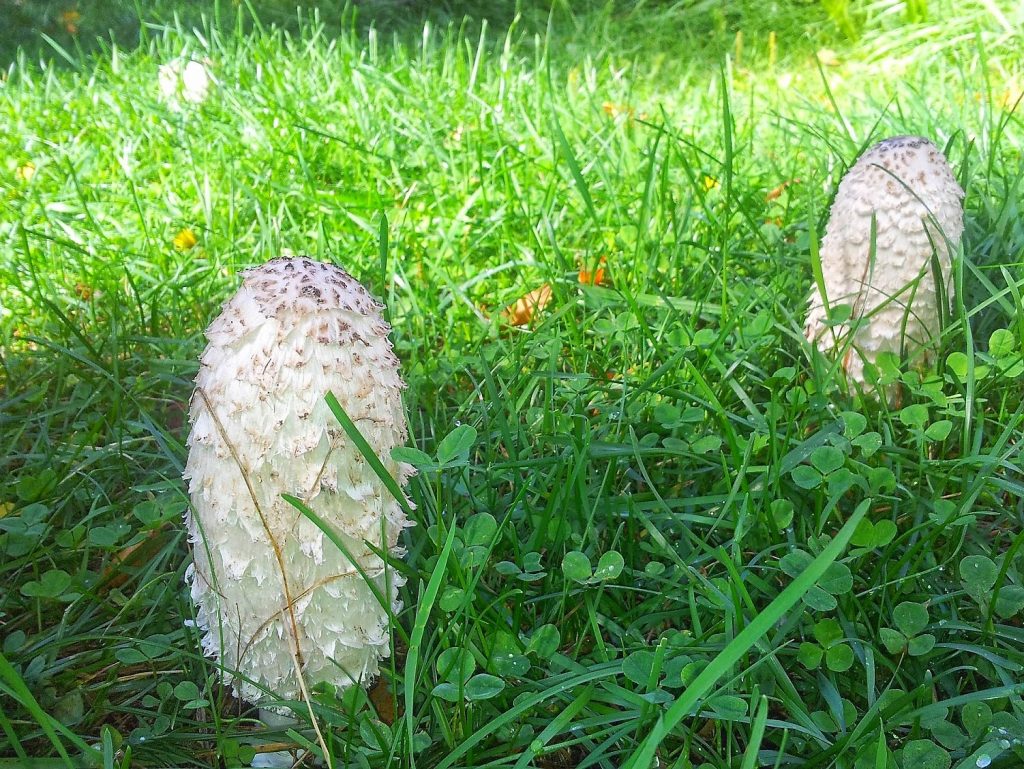
With regard to other wild edible fungi in the fall, be sure to check out looking for other species such as hen of the woods, chanterelle, lion’s mane and turkey tail.
Safety & Wild Fall Mushrooms
- All wild mushrooms collected must be fresh specimens. The general guideline after gathering is to soak them briefly in salt water, rinse them with cold tap water, pat them dry with a paper towel and thoroughly cook them before eating. Use them right away or dry (dehydrate) them. Mushrooms usually do not last very long. Once they have shed their spores, the collapse and deteriorate. Although, some species like turkey tails can last much longer. And, not under any condition should you sample a raw wild mushroom! Cooking edible wild mushrooms essentially stabilizes or chemically changes the components that may cause severe gastric discomfort and digestibility issues.
- If possible, enlist the help of an experienced fall forager or trained mycologist (biologist who specializes in fungi) when learning about autumn’s wild mushrooms. Join a mushroom club or local affiliate of the North American Mycological Association, where you’ll learn things from the experts like how to correctly make a spore print for positive ID on fungi. Go to workshops and forays on harvesting edible fall fungi, if offered.
- Consult multiple credible, reliable apps or guidebooks with photos, and ensure that all identification points listed match your specimens. A nice field guide for mushrooms has been done by the Missouri Department of Conservation, to view it click here. Vivid descriptions and pictures of mushroom anatomy, cap shapes, surface textures and gill spacing are just a few of the features used to determine what species of fungi you have. Show your finds to experts at nature centers or state park offices.
- Collect and identify what you think is the same species repeatedly. Some mushrooms change appearance dramatically as they mature.
- When trying a new wild mushroom for the first time, eat just a small portion; some people react badly to mushrooms that others can eat with no problem. Always set one mushroom back to give to a physician in the event of illness.
- Keep in mind that some wild mushrooms don’t mix well with alcohol at all, but reactions differ from person to person. It is a good idea to leave the alcoholic beverages off of the meal list when serving wild mushroom dishes.
- When in doubt, throw it out. Never, ever eat a wild mushroom unless you are 100% certain of its identity! Don’t guess and don’t experiment! There are poisonous mushrooms that resemble the ones fit to be eaten, know the differences between them. Consume the wrong fungi and it may lead to extreme sickness and even death! As the saying goes: “There are old mushroom hunters, and there are bold mushroom hunters. But there are no old, bold mushroom hunters!”
- When foraging alone (it is always best to go with a partner), tell someone when you’re going out and when you plan to return.
Important Field Notes
- The greatest variety of mushrooms in Nebraska can be discovered from late September through mid November, depending on weather. Moisture matters. Head out after a few rainy, misty few days and you should be in luck, as new species are likely to ‘pop up’ in good numbers.
- Before venturing onto any private property, know that you must have permission from the landowner of his or her agent, whether the ground is posted or not!
- Hobby picking (non-commercial picking) of edible fungi is allowed on Nebraska Game and Parks Commission owned and controlled properties, unless signed or indicated otherwise. A current, valid state park permit is required on motor vehicles entering state park lands. On state wildlife management areas and certain state park lands, hunters most likely will be present, so be seen by wearing some blaze orange clothing and steer clear of hunting blinds and treestands.
- Wear clothing specific to a morel mushroom hunt in the spring (e.g. long pants, light-colored socks, light colored shirt, cap, etc.).
- Good footwear is quintessential for fall mushroom gathering. Choose a good pair of comfortable hiking boots or shoes with adequate ankle support.
- Among the necessary pieces of equipment for hunting and harvesting mushrooms in the fall are a container of insect repellent, mesh bag or well-ventilated collection basket, walking stick, pocket knife, Smartphone or iPhone and bottle of water.
- Pay special attention to the presence of poison ivy. Remember the line: “Leaflets of three, let it be!” Also, know how to identify stinging nettles and other plants that cause skin irritation.
- Fall mushroom hunters should be careful to not intentionally disrupt wildlife or cause damage to their homes (dens, etc.) and make certain to pack out all trash and recyclables.
- Please take only quantities of edible fungi that you will use! Harvest responsibly!
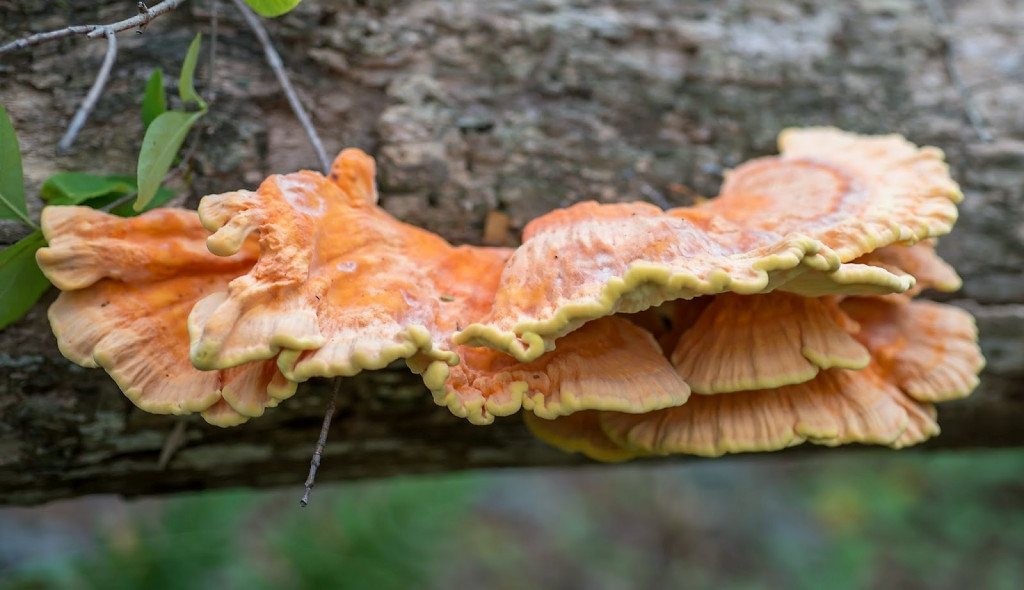
Did you know … Fungi make blue cheese blue. Others create antibiotics and other drugs. One early strain of penicillin was first isolated in the 1940s from a rotten cantaloupe!
The post Fighting the Fear Factor of Foraging for Fall Fungi appeared first on NEBRASKALand Magazine.














